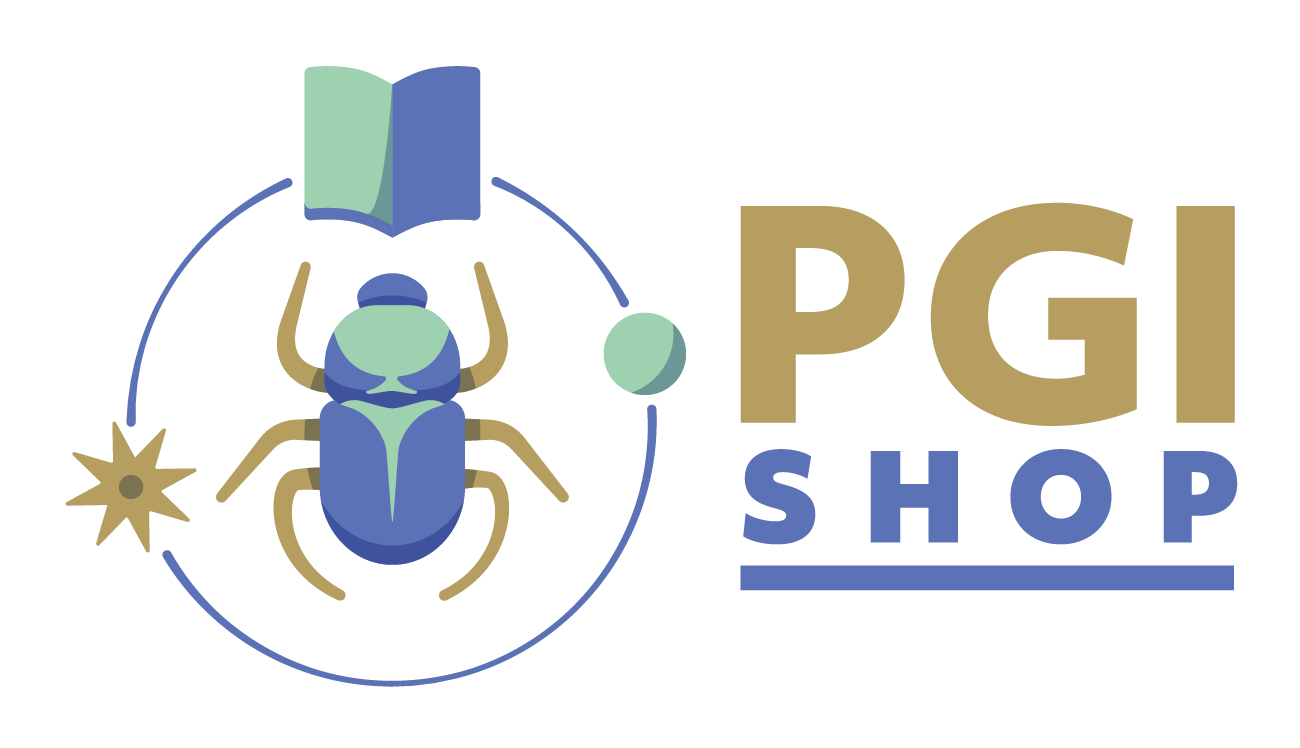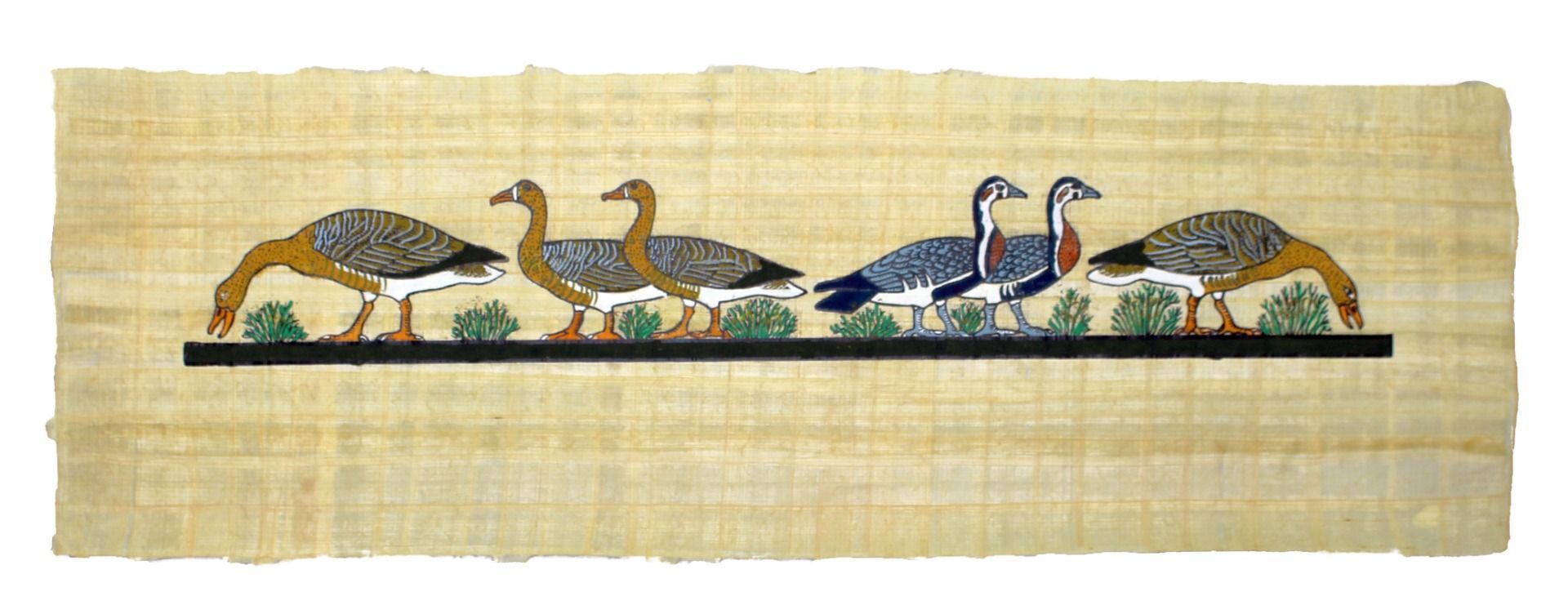Extra large size - Geese of Meidum painted
Hand-painted natural papyrus with motif - natural border - approx. 32 × 95 cm
Egyptian painting reached its first peak with the famous "Geese of Meidum". A frieze of six geese formed part of the bird-hunting scene in the tomb of Princess Itet at Medum. The motif was painted on gesso, a colour-prepared painting ground of alabaster plaster. The choice of colours and the delicacy of the lines make the painting a masterpiece.
Nefermaat and Itet were married and had fifteen children together. Nefermaat is best known from his large mastaba in Meidum, where he was buried with his wife Itet. Nefermaat also held the title of "overseer of all royal construction work" and was thus probably also the master builder of the Meidum pyramid.
The two cult rooms of the mastaba have gained special fame through the technique of their decoration. Most of the inscriptions and depictions were cut into the stone and then filled in with a colour paste. Nefermaat himself comments on this technique in his tomb: "He made his mastaba in this indestructible script".
Part of the cult room of the Itet has been painted, and it is from here that the famous "Geese of Meidum" originate. This is a 162 cm long and 24 cm high fragment of painted stucco, which is now in the Egyptian Museum in Cairo. It shows six geese arranged in two groups looking away from each other. The two outer birds are bean geese, the pair on the left shows white-fronted geese and the one on the right red-breasted geese.
What is special about this painting is not only its extremely detailed rendering of the birds, but also its uniqueness in all of ancient Egypt. While depictions of white-fronted geese are also found in several other places, depictions of bean and red-breasted geese are only known from this tomb.
Our papyrus offer
We offer you light, ochre-coloured natural papyrus from Egypt. You can choose from various hand-laid formats. The design possibilities with papyrus are manifold. You can write on it, paint it or print on it; you can use ink, fibre pens, water-based or tempera paints.
Papyrus is a natural product
In the Nile Delta, papyrus leaves are still produced in the traditional way. Families in the countryside harvest the papyrus stems, which can be up to 6 metres high, and process the raw material into papyrus leaves with great skill. Carefully made papyrus leaves are produced in several steps, which always have an individual, handcrafted character.
Fair trade with Egypt
PGI buys Egyptian products directly from the producer. This allows us to bypass dealer stations and offer our customers favourable prices. But the Egyptian producers also benefit from this direct marketing, they achieve much higher prices for their products. We regularly visit our partners in Egypt and discuss the upcoming needs on site.

